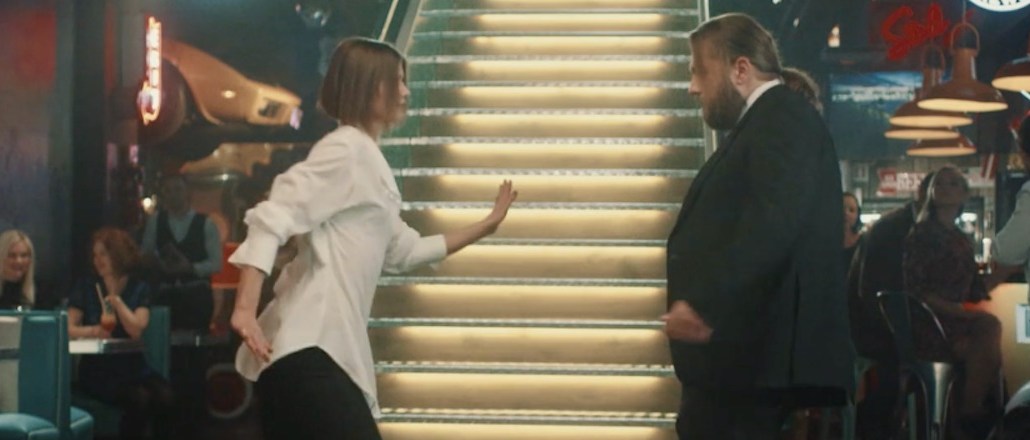
Mark Duffy has written the Copyranter blog for 11 years and is a freelancing copywriter with 25-plus years of experience. His hockey wrist shot is better than yours.
Since I (mistakenly) started this ad blogging venture, in the summer of 2005 (it was slow at the agency), I’ve made it my life mission to expose the worst and dumbest ads in the world (as a certain leader of the free world might say, “Sad!”).
It’s been a while since something caught my stink eye. The Super Bowl “YellowFail” spot made it twitch. But then, this spot, “The Feeling,” for Nordea Bank in Latvia (Nordea is a Swedish financial group with locations in several northern European countries) showed up on Ads Of The World.
It’s only 40 seconds long; please watch it. (Here’s the shorter English version of the video — it can’t be re-posted because it’s set to “private.”)
This is what is called a “borrowed interest” ad. It is also what I call “The most insipid misappropriation of pop culture ever that is so random and disconnected from the product that it makes you look like you’re purposely trying to unsell yourself” ad. (Hey, Tarantino, it’s for a BANK, sue the dipshits.)
The spot is by DDB in Latvia. The home office boys at DDB NYC need to get on a conference chat with the Latvian brass and remind them that DDB doesn’t stand for “Dumb-Dumb Branding.”
Now, we’re not talking about the “worst” ad ever here. There is distinction. A worst-ads discussion would include ads like this Burger King print execution and this Brazilian World Wildlife Fund 9/11 spot.
Dumb ads can be intentionally dumb (like the Nordea commercial is, I think) or they can be unintentionally dumb, like these pretentious yet idiotic “philosophical” French Wrangler spots from 2009:
https://www.youtube.com/watch?v=aXQwFqehGB0
René Descartes said “I think, therefore I am.” Wrangler, apparently, wants me to not be, to not exist, to be nothing. Good, then I don’t have to consider buying your shitty-fitting jeans.
https://www.youtube.com/watch?v=3LeSPE3k-kw
Jean-Paul Sartre once said: “Evil is the product of the ability of humans to make abstract that which is concrete.” Evil example No. 1: this spot.
The Wrangler ads are very dumb, but are they dumber than the Nordea ad? It’s kind of a toss-up. Let’s check out a couple more of the dumbest ads I’ve ever seen. When this Pert Plus “Dog” spot came out in 2011, I thought it had to be a parody. It is amazingly stupid, with an epically stupid and sexist ending “joke”:
The guilty ad agency here is New Jersey’s Sigma Group. And it still has the Pert Plus account.
How dumb was that? Dumber than the Nordea ad? Quite possibly! Depends on your mood. OK lastly, take a look at the dumbest ad from arguably the dumbest beer campaign of all time: Miller Lite’s “Man Up” effort.
Homophobic “manly” Bros who prefer tasteless piss water to beer loved the ad. The rest of the population, not so much. Read the YouTube comments if you want to get a sense of which way the general public’s thoughts swung.
But is “Scarf” dumber than the Nordea ad? It is dumber in the sense that it alienated many potential customers, but is it a dumber piece of communication? Eh, not quite?
So, in conclusion, the Nordea Bank spot is — maybe? — the dumbest commercial ever produced. If you’ve got one that you think is dumber, go right ahead and post it in the comments.
Post-inquiry caveat: Dumb “local” commercials were purposely excluded from consideration here.
More in Marketing

For platforms, here’s what’s not going to happen in 2026
Rather than the traditional platform predictions, this is a list of what Digiday believes won’t happen next year.

Cheez-It bets on ‘Prince Cheddward’ mascot in an overcrowded sports marketing arena
To cut through sports marketing noise, Cheez-It is resurrecting Prince Cheddward and betting on nostalgia.

The anatomy of an agency chief client officer
Several major agencies have moved to appoint chief client officers to their top cohorts lately.







